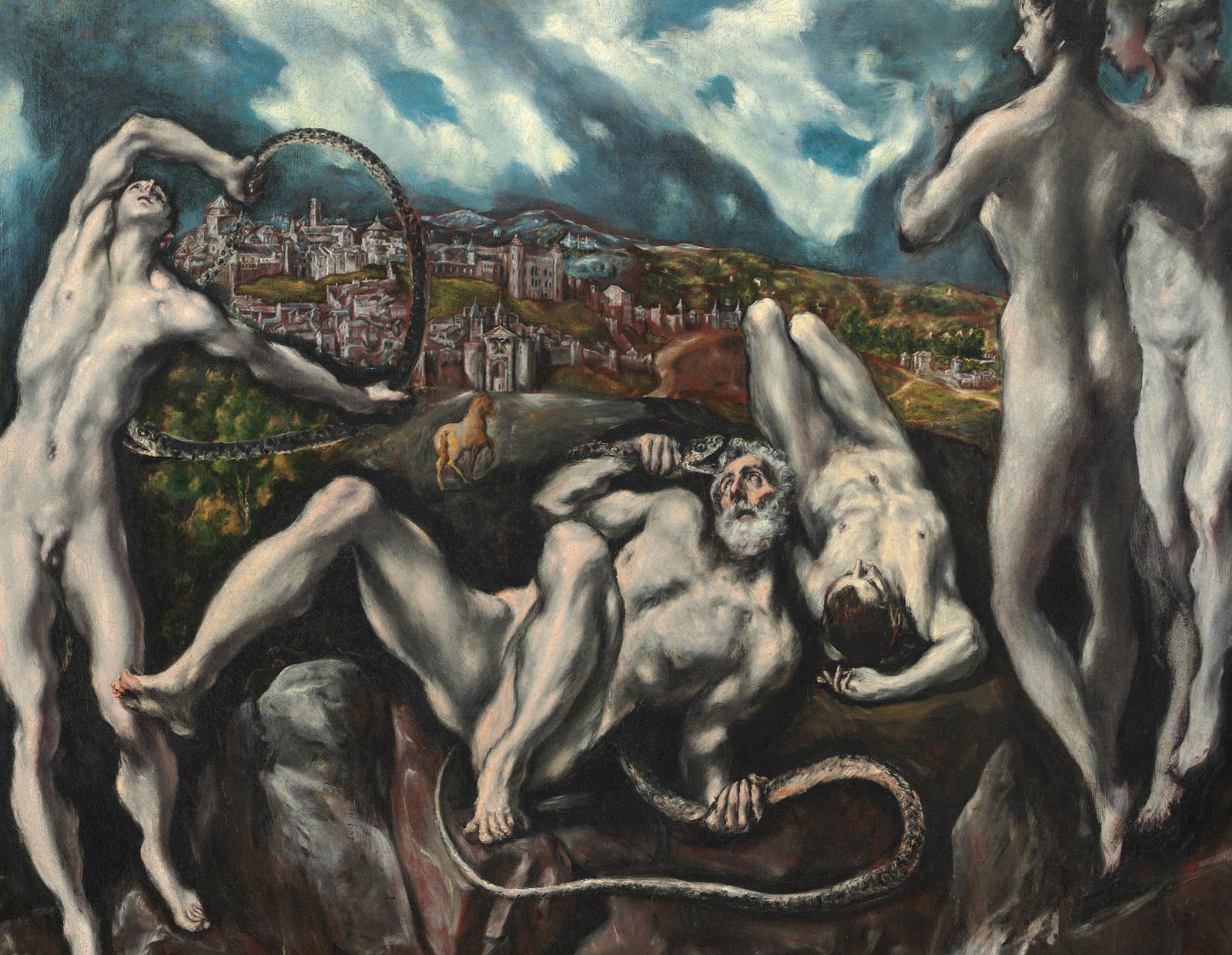El Greco’s painting is a study of tumult and anguish. The bearded Laocoön, sprawled awkwardly on his back, wears a look of terror as he struggles to fend off a writhing serpent, jaws agape, which lunges at his head. One son lies dead behind him. The second, at left, desperately twists and strains to keep the other serpent from piercing his thigh. The wooden horse is visible in the background (pointed to by the standing son’s outstretched hand) approaching Toledo’s gates. At the far right, two unfinished standing figures, perhaps Greek gods, witness the action without intervening.
By elongating the naked bodies of Laocoön and his sons, El Greco exaggerates their corporeality even as he renders them conceptual rather than lifelike figures. The harsh lighting, heightened by the dark paint outlining the bleached bodies’ contours, plainly exposes the men’s plight and imparts a flickering, spectral quality to their freely painted flesh. The push-and-pull between the taut, overlapping, angular bodies and the arabesques formed by the serpents together with the threatening storm clouds, the unforgiving landscape, and illogically constructed space contribute to a singularly nightmarish scene of upheaval.
The meaning of El Greco’s Laocoön remains obscure. The artist’s only extant mythological scene, it likely represents a Christianized take on classical subject matter. In substituting Toledo for Troy, El Greco may have been warning his fellow citizens not to succumb to some contemporary treachery, perhaps religious practices he viewed as antithetical to Counter-Reformation edicts. Doubtless familiar with the renowned ancient sculpture of Laocoön that had been uncovered in Rome in 1506, the famously self-confident El Greco may have tackled the same subject to demonstrate that his artistic abilities were equal to those of anyone in history.



